The blog of cooking-ez.com
How to zest a fruit?
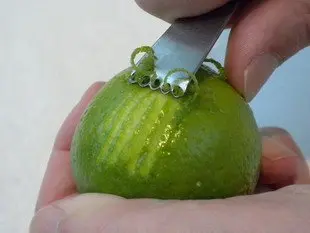
You will have no doubt noticed that many recipes call for the zest of citrus fruit. The zest is that outer layer of the skin which adds so much flavour to a dish.
There are many different ways to peel off the zest and various tools are available. Here is a summary of the “dos and don'ts” of zesting.
There are many different ways to peel off the zest and various tools are available. Here is a summary of the “dos and don'ts” of zesting.
40K 59 3.8
Last modified on: November 5th 2013
Keywords for this post:ZestZisteZesterGraterFruitCitrusSkinPeelHow to zest a fruit?
Good fruits
First and foremost: zesting a fruit means removing the upper, outer part of the rind, which also happens to be the part that receives most of the chemical treatment inflicted on the fruit.
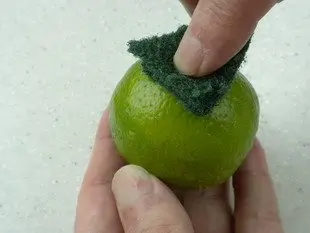
So be careful: you absolutely must wash the fruit thoroughly before zesting it, but the best thing to do is to use organic fruit, which is guaranteed to be untreated.
The right part of the fruit
The part of the peel that can be zested is generally very thin, 1 millimetre or less, so it's very important to remove only the coloured part of the peel - the zest - and not the white part underneath, which is not zest but a major source of bitterness, to be avoided at all costs!

In this photo, you can see the zest on the right and the white part of the peel on the left.
The right tools
There are a number of more or less effective tools for zesting:
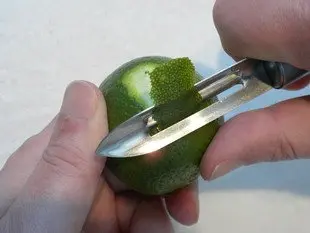
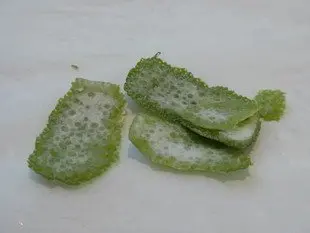
1) The peeler or a sharp knife: with it, you delicately "peel" the fruit and obtain small strips of zest (colored, remember: no white) which you then have to cut into strips, then into tiny pieces. It's not very fast, nor very efficient, but it works.


2) The zester: this is a strangely-shaped knife that zests by making tiny filaments. The structure of the zester means that you can't remove any white parts, which is interesting. The only drawback is that the zest obtained is a little "crushed" and "exuded", so it's not great.
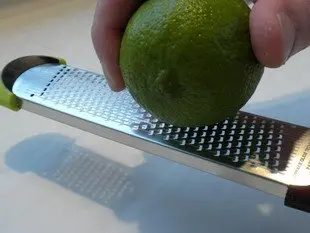
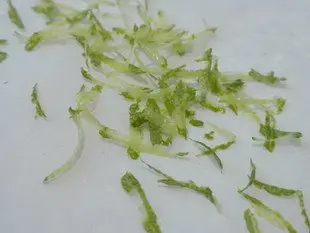
3) The zester grater: This is a bit like a cheese grater, very fine, on which you rub the fruit while rotating it (be careful, it's the fruit that moves, not the grater).
It's by far the most efficient of all tools, and you can find out more about it on this page.
Lasts posts
Wipe meats and fish before cooking
When you want to cook meat or fish, there's a very simple yet very important step to take before you even start: It's to dry, or wipe, each side of the meat or fish, sometimes called "dabbing" or "sponging". But why? And how? Let me explain.5635 April 14th 2024
Toss the salad
When you've finished preparing a salad, green or otherwise, it's usually time to add the dressing and toss. It's often said to "toss the salad", which means to season and mix. Is it easy? Not so easy...2,2935 March 8th 2024
Half milk, half cream
In a multitude of recipes, savoury or sweet, milk is used as the main ingredient, or at least as the main liquid ingredient. Milk is used instead of water, for example, because milk contains a proportion of fat, which adds roundness and softness to the recipe. This mellowness is very pleasant on...2,234 February 27th 2024
Cutting soft cheeses
As you may have already noticed, when you have to use a "soft" cheese in a recipe - their exact name is "soft cheese" - such as Camembert, Munster or Mont d'or, it's not easy to make anything other than thick slices.2,3855 February 20th 2024
It's spinning too fast!
When you need to grate or slice vegetables, you generally use an electric machine that does all the work: a food processor, a mixer with a "slicer" extension or similar. Are these machines really suitable? Generally speaking, yes of course, but there's one criterion that often poses a problem,...5,2685 November 12th 2023
Other pages you may also like
Drawing a pattern in pastry
Often in the kitchen, in pastry-making, or in baking, we need to trace a pattern on a pastry. It's just a question of aesthetics but it has its effect after baking on a galette, pithiviers, pâté en croute (terrine in a pie crust), etc.25K4.1 May 23th 2019
The secret of cooking until "done"
This is a real chef's skill: being able to look at a fish fillet cooking and say, "Stop – that's enough, it's cooked". I always admire this ability to see at a glance if something is done. It is what sets the professionals apart from us mere amateurs. And it's true that how fish is cooked is...15K4.4 November 26th 2012
85 grams of eggs?
Some time ago, I already spoke to you about the difference between baking and pastry-making, I emphasized, among other things, the precision of pastry-making which requires grams, cm, degrees and minutes. That's why, on the one hand, you have baking and cooking, where a certain tolerance is...46K4.6 November 26th 2018
For well opened (puffed) cakes
It's always nice to have a well puffed up cake after baking, not only will it taste good but it looks great too. Let's see how to get this beautiful shape almost every time.26K4.2 January 23th 2019
From website to blog
Hello everyone, Today I'm inaugurating the cooking-ez.com "blog". The idea is to have a space for discussion open to everone, but not necessarily linked to a particular recipe or page. I hope the posts will be sufficiently interesting that you'll enjoy reading and discussing them. The...15K3.9 January 1st 2011
Follow this page
If you are interested in this page, you can "follow" it, by entering your email address here. You will then receive a notification immediately each time the page is modified or a new comment is added. Please note that you will need to confirm this following.
Note: We'll never share your e-mail address with anyone else.
Alternatively: you can subscribe to the mailing list of cooling-ez.com , you will receive a e-mail for each new recipe published on the site.









